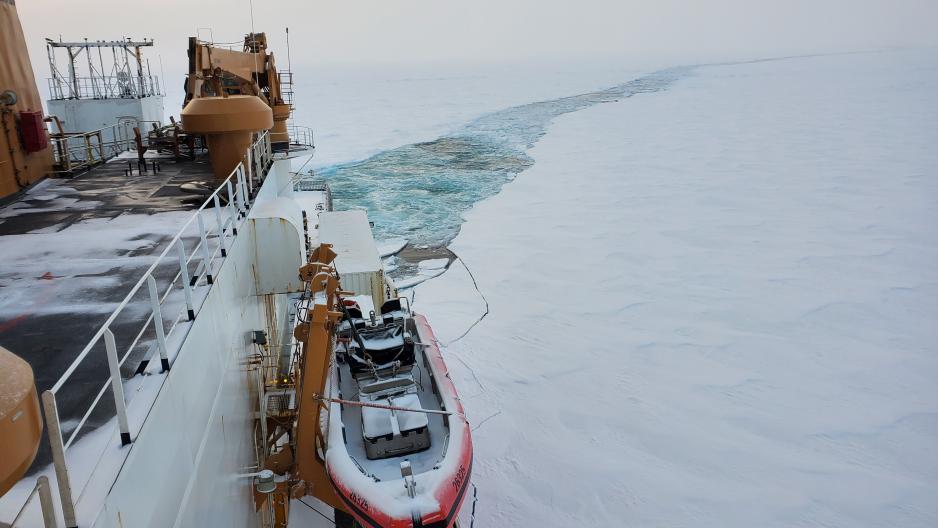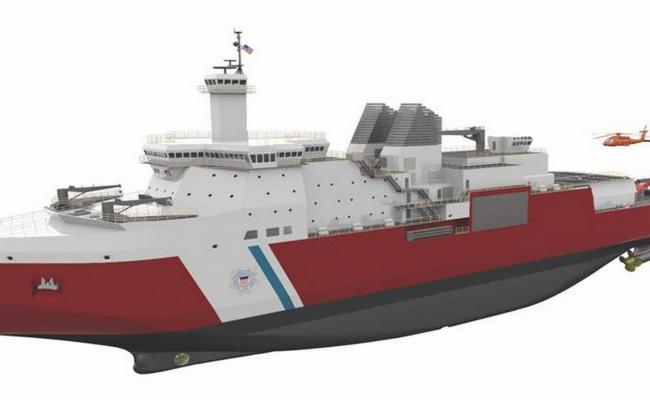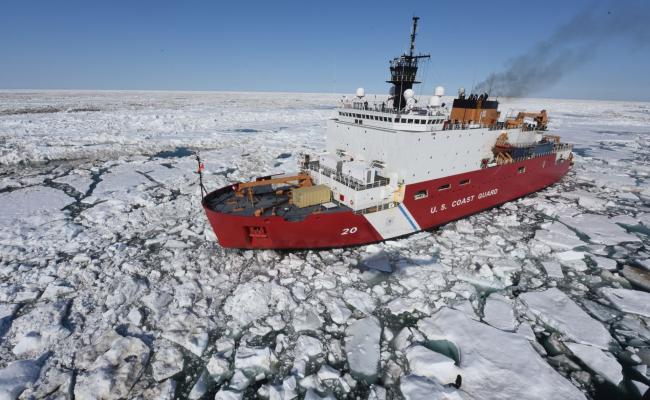Coast Guard Icebreaker Healy Reaches North Pole As Part of Greater US Arctic Engagement

US Coast Guard Cutter Healy cuts a channel through the multi-year pack ice en route to the North Pole. (Source: Courtesy USCG/Deborah Heldt Cordone, Auxiliary Public Affairs Specialist 1)
The Arctic continues to gain greater attention in US policy circles and it sent the icebreaker Healy to patrol its maritime border with Russia and venture to the North Pole this summer. However, hard assets, such as icebreakers, remain in short supply for now.
United States Coast Guard Icebreaker Healy reached the North Pole late last week during a months-long expedition across the region.
The Healy’s trip represents only the second time a US surface vessel has traveled to the North Pole unaccompanied. The first time was also accomplished by the Healy back in 2015.
The icebreaker has been deployed to the Arctic since July 11 and during July and August sailed across the Beaufort and Chukchi seas and patrolled the maritime border with Russia.
Its mission is two-fold. In addition to supporting scientific research and Arctic science – it hosts 34 researchers and from a number of universities and institutions – the vessel’s voyage is also aimed at projecting US presence and capabilities in US Arctic waters.
"We are honored to demonstrate Arctic operational capability and facilitate the study of this strategically important and rapidly changing region,” said Capt. Kenneth Boda, commanding officer of the Healy.
The Healy was not alone this summer traveling across the Arctic Ocean. Last month another US Coast Guard vessel, the Cutter Bertholf, encountered four Chinese navy vessels on patrol just 46 miles from Alaskan waters.
More policy and strategy engagement
The vessel’s presence in the Arctic is part of stepped-up engagement of the US in the region.
Just last week the US Department of Defense announced the creation of a new Arctic Strategy and Global Resilience Office. "[The Arctic] is a critical region for power projection and also for homeland defense," says Iris A. Ferguson, the Deputy Assistant Secretary of the new unit in the Pentagon.
We have not built a heavy icebreaker in a long time
Part of the office’s role will be to coordinate the efforts of the Northern, European and Pacific commands of the US military, all of which cover parts of the Arctic.
Earlier this summer in August, the US created its first-ever ambassadorship for the Arctic.
In addition, in Alaska, a newly created center for Arctic security studies, named after the state's late Senator Ted Stevens, also aims at supporting defense strategy and policy in the region.
Hard assets are lagging behind
Despite greater policy engagement with the Arctic, the Coast Guard’s assets in the region remain limited for the foreseeable future. The Healy, a medium icebreaker, was commissioned in 1999 and is the US’ newest icebreaker.
The sole heavy icebreaker in service, the Polar Star, was commissioned nearly 50 years ago, and has faced repeated technical breakdowns as well as a recent fire. The Healy’s 2020 summer campaign was also cut short due to an engine fire.
After more than a decade of indecision the US Coast Guard secured funding in 2019 to begin building a new class of icebreakers.
However, delays in the program now mean that the first new icebreaker – recently announced to carry the name Polar Sentinel – will not enter into service until 2026 at the earliest. The Coast Guard aims to procure between three and five of these new Polar Security Cutters.
Construction for the first one has yet to begin and finds itself more than a year behind schedule already. Not surprising experts warned during the initial procurement process about likely delays since the US has not constructed a Polar-class icebreaker in nearly 30 years.
“We haven’t built a heavy icebreaker in a long time — [there’s] special steelwork, different skills — but we’re guardedly optimistic we’ll meet [the 2026] timeline,” Adm. Karl L. Schultz, commandant of the Coast Guard explained earlier this year.



